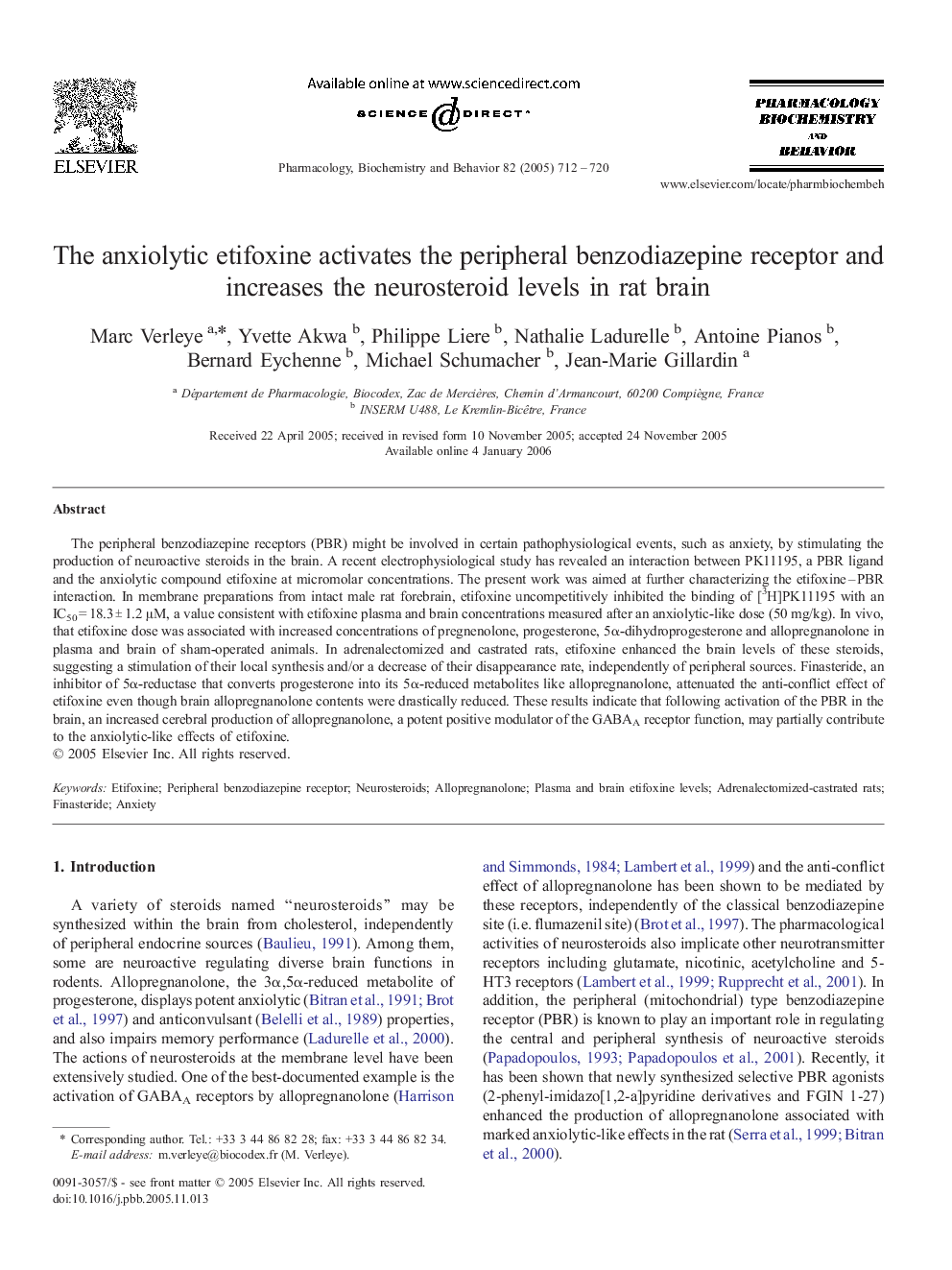| Article ID | Journal | Published Year | Pages | File Type |
|---|---|---|---|---|
| 10838700 | Pharmacology Biochemistry and Behavior | 2005 | 9 Pages |
Abstract
The peripheral benzodiazepine receptors (PBR) might be involved in certain pathophysiological events, such as anxiety, by stimulating the production of neuroactive steroids in the brain. A recent electrophysiological study has revealed an interaction between PK11195, a PBR ligand and the anxiolytic compound etifoxine at micromolar concentrations. The present work was aimed at further characterizing the etifoxine-PBR interaction. In membrane preparations from intact male rat forebrain, etifoxine uncompetitively inhibited the binding of [3H]PK11195 with an IC50 = 18.3 ± 1.2 μM, a value consistent with etifoxine plasma and brain concentrations measured after an anxiolytic-like dose (50 mg/kg). In vivo, that etifoxine dose was associated with increased concentrations of pregnenolone, progesterone, 5α-dihydroprogesterone and allopregnanolone in plasma and brain of sham-operated animals. In adrenalectomized and castrated rats, etifoxine enhanced the brain levels of these steroids, suggesting a stimulation of their local synthesis and/or a decrease of their disappearance rate, independently of peripheral sources. Finasteride, an inhibitor of 5α-reductase that converts progesterone into its 5α-reduced metabolites like allopregnanolone, attenuated the anti-conflict effect of etifoxine even though brain allopregnanolone contents were drastically reduced. These results indicate that following activation of the PBR in the brain, an increased cerebral production of allopregnanolone, a potent positive modulator of the GABAA receptor function, may partially contribute to the anxiolytic-like effects of etifoxine.
Related Topics
Life Sciences
Biochemistry, Genetics and Molecular Biology
Biochemistry
Authors
Marc Verleye, Yvette Akwa, Philippe Liere, Nathalie Ladurelle, Antoine Pianos, Bernard Eychenne, Michael Schumacher, Jean-Marie Gillardin,
